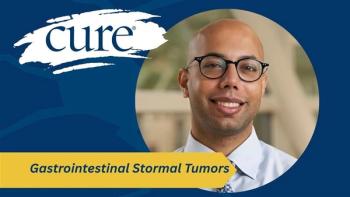
Iclusig Leads to Better Responses Than Gleevec in Leukemia Subset
Patients with Philadelphia chromosome-positive acute lymphoblastic leukemia had better MRD statuses after receiving Iclusig, compared with Gleevec.
Patients with newly diagnosed Philadelphia chromosome-positive acute lymphoblastic leukemia (ALL) had better minimal residual disease (MRD) outcomes after receiving Iclusig (ponatinib), compared with Gleevec (imatinib), according to a study.
MRD refers to very small traces of cancer cells that may remain in the body during or following treatment, as the National Cancer Institute defines. Highly sensitive laboratory methods help find MRD in one cancer cell among one million normal cells. This type of testing is mostly used for blood cancers, including leukemia and lymphoma.
Iclusig is a type of tyrosine kinase inhibitor (TKI) that blocks certain proteins created by the BCR::ABL mutation, to help prevent the growth of cancer cells and may help destroy cancer cells, the National Cancer Institute states.
Gleevec is another type of TKI that blocks certain proteins created by gene mutations, such as BCR::ABL. This drug also prevents the growth of cancer cells and may also destroy them, according to the National Cancer Insitute.
In a phase 3 study published in JAMA Network, 232 patients who were newly diagnosed with Philadelphia chromosome-positive ALL were included. Patients were randomly assigned to receive either Iclusig or Gleevec, in which 154 patients were in the Iclusig group and 78 were in the Gleevec group.
The main goal of the study was to identify whether patients could have MRD negativity and achieve complete remission (meaning all signs and symptoms of cancer have disappeared) at the end of the third cycle, the study noted.
At the end of induction (the end of the third cycle), the researchers found that the MRD-negative complete remission was significantly higher among patients treated with Iclusig, compared with those treated with Gleevec. Of note, researchers determined that the response rate for Iclusig (34.4%) doubled that of Gleevec (16.7%).
Patients in the study who had evaluable samples at the end of induction also showed better MRD negativity, specifically in patients who had received Iclusig (43.0%) versus patients who received Gleevec (22.1%).
Because of the positive results from the phase 3 study, the
“This is the first time ever [that a] drug [has] been approved in a frontline [setting for] patients with [Philadelphia chromosome-positive] ALL,” said study author Dr. Elias Jabbour during an interview with CURE®. Jabbour is a professor of medicine in the Department of Leukemia at the University of Texas MD Anderson Cancer Center.
He noted that the results of the study are important for patients to understand because historically, the outcome for Philadelphia chromosome-positive ALL.
“[Before,] the only option [was] to go for [stem cell] transplant, and yet even transplant can be a curative approach,” Jabbour said. “It’s a very heavy procedure and toxic — people can die from it. So today, [there is] treatment that can improve the life of [patients], which I think is very important. Not only that, [but] it improves the lives of people without the need for intensive chemotherapy and transplantation, which [is] a major accomplishment as well.”
READ MORE:
Of note, what sets Iclusig apart from other TKIs is that it can inhibit most mutations, which prevents the cancer from resisting the treatment, Jabbour said.
“All drugs can have resistance [because of] mutations, but [Iclusig] can inhibit most of the mutations and therefore it works with or without mutations, Jabbour explained. “This is the major characteristic of the drug — it is not affected by the mutations that can cause resistance.”
Regarding side effects, Jabbour noted that when treated for leukemia, patients often experience a drop in platelets (cells in the bone marrow that help with blood clotting and healing wounds), red blood cells and white blood cells. This side effect was considered the most common in the study, which occurred at grades 3 and 4 (severe to life-threatening) in 63.2% of patients in the Iclusig group and 58.0% in the Gleevec group.
The most common grade 3 or 4 side effect that emerged during treatment — but was not necessarily caused by treatment — in both treatment groups included increased alanine aminotransferase (damaged liver cells), high blood pressure, increased lipase (enzyme that breaks down fats in the food) and hypokalemia (low potassium levels).
For more news on cancer updates, research and education, don’t forget to





